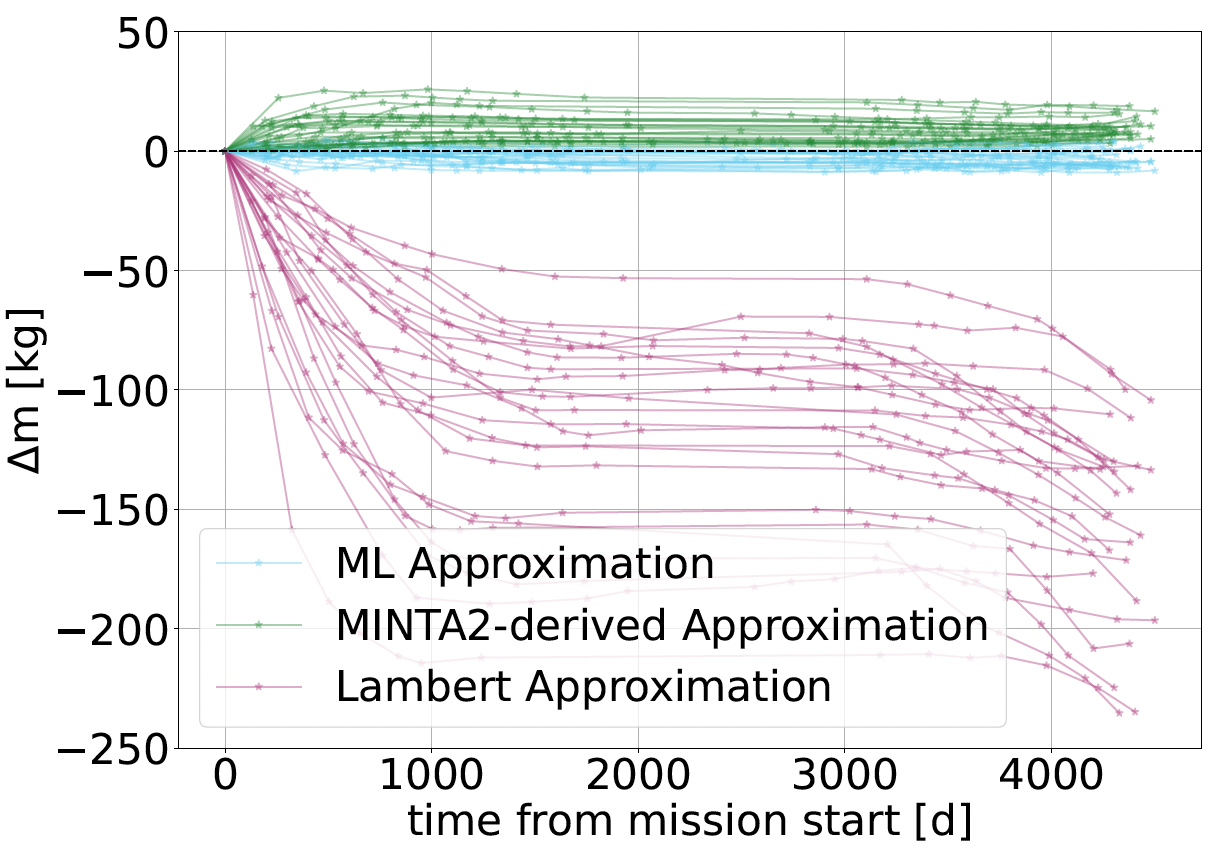Humans vs Machines
Background

Low-thrust trajectories for multitarget missions in the asteroid belt are pivotal for maximizing the scientific return and reducing costs. While fuel-optimal high-thrust transfers can be found using an impulsive modelling, often reduced to a single Lambert arc, the search for fuel and time-optimal low-thrust trajectories necessitates the solution of an optimal control problem. In preliminary mission design, for example when identifying possible mission targets, this is a hindrance since the combinatorial complexity grows exponentially with the number of visited asteroids. This is worsened by the orbital mechanics of asteroids, which makes the optimal transfers depend on the allowed departure windows. Furthermore, some transfers might not be possible, because the initial mass of the spacecraft might be too high to enable the transfer.
In this context, the possibility of knowing whether a given transfer is possible in low-thrust and then quickly approximating its propellant usage without solving any optimal control problem allows for efficiently exploring the complex landscape of mission opportunities. While approximation methods have been proposed utilizing orbital theory, evolutionary, and machine learning paradigms, their applicability remains limited by the accuracy achieved or the used attributes [1,2,3].
Project goals
In this project, we study new astrodynamics manipulations and machine learning approaches for the approximation of low-thrust transfers. We analyze the two approaches using the case of transfers between asteroid in the asteroid belt. The accuracy of the proposed methods are compared and the preference for one approximation over the other is scrutinized under different conditions. The objective is to develop generic approximators that can work for different ranges of low-thrust transfers (with different initial masses, time of flights, etc.) [4,5].
References
[1] Hennes, Daniel, Dario Izzo, and Damon Landau. "Fast approximators for optimal low-thrust hops between main belt asteroids." In 2016 IEEE Symposium Series on Computational Intelligence (SSCI), pp. 1-7. IEEE, 2016.
[2] Mereta, Alessio, Dario Izzo, and Alexander Wittig. "Machine learning of optimal low-thrust transfers between near-earth objects." In International Conference on Hybrid Artificial Intelligence Systems, pp. 543-553. Cham: Springer International Publishing, 2017.
[3] Zhu, Yue-he, and Ya-Zhong Luo. "Fast evaluation of low-thrust transfers via multilayer perceptions." Journal of Guidance, Control, and Dynamics 42, no. 12 (2019): 2627-2637.
[4] Izzo Dario, Marcus Märtens, Laurent Beauregard, Max Bannach, Giacomo Acciarini, Emmanuel Blazquez, Alexander Hadjiivanov, Jai Grover, Gernot Heissel, Yuri Shimane, Chit Hong Yam. "Asteroid Mining: ACT&Friends' Results for the GTOC12 Problem". In Astrodynamics, 2024.
[5] Acciarini Giacomo, Dario Izzo, and Laurent Beauregard. "Computing low-thrust transfers in the asteroid belt, a comparison between astrodynamical manipulations and a machine learning approach". In 29th International Symposium on Space Flight Dynamics (2024).